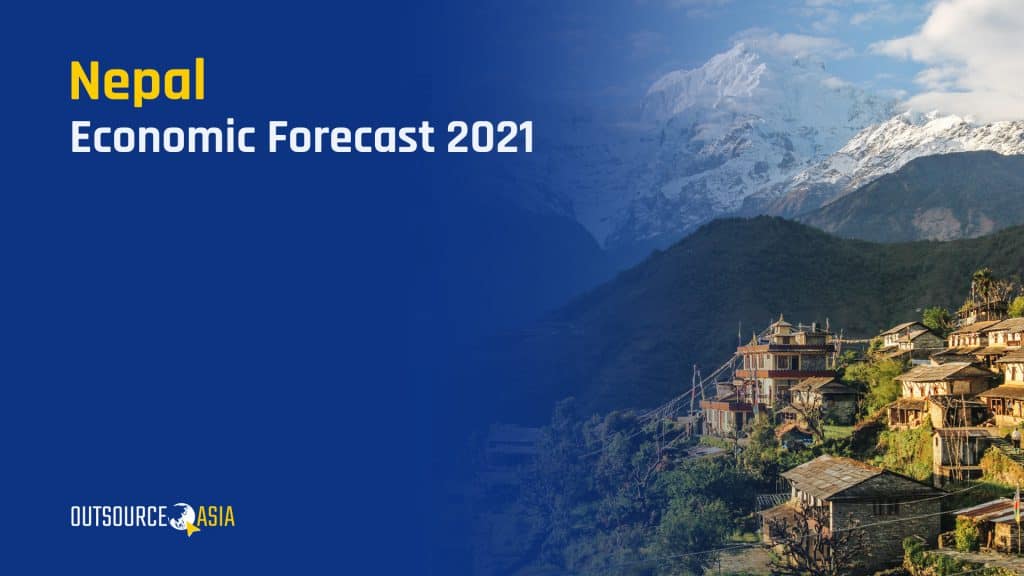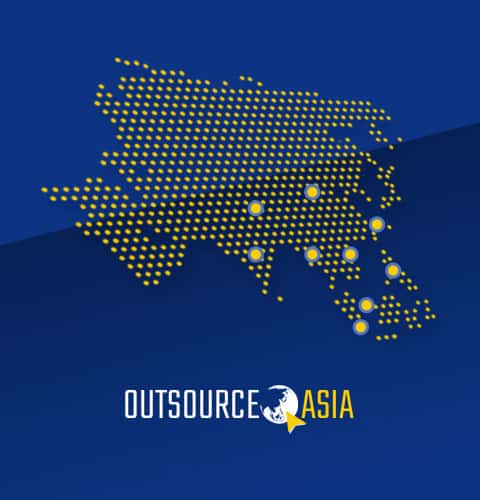
Nepal Economic Forecast 2021
The Nepal Economic Forecast 2021 summarizes key economic and social developments over the past year. It also presents findings on the evolution of policy reforms, external/global conditions, and financial-market dynamics from world-recognized financial institutions and multinational professional services authorities, assessing their implications for the country’s medium-term economic outlook.
The economic recovery in Nepal remains surrounded by uncertainty. Nepal’s GDP in 2020 contracted by -1.9% – the first time in four decades – as a series of nationwide and localized lockdowns were implemented from March to September last year. Nepal’s GDP in 2019 grew by 6.75% but the pandemic-related restrictions in all sectors most especially in tourism, transportation, and education have resulted in a record negative growth rate. If the government implements more containment measures for the remainder of the year, the forecasted 3.1% economic growth in 2021 will be a challenge to realize. According to World Bank, continued disruption of economic activities will set Nepal’s GDP to plunge to 0.6%, taking a disproportionate toll on informal workers.
“The economic consequences of the pandemic and impact on livelihoods across Nepal is expected to be the most acute for informal workers or those without social security or assistance, who are more at risk of falling into extreme poverty,” stated Faris Hadad-Zervos, World Bank Country Director for Maldives, Nepal, and Sri Lanka.
Hadad-Zervos explained that there should be provision for employment, regular income, and social protection to support workers from the most vulnerable groups, especially urban informal sector workers and self-employed households. “Swift action is needed to promote physical infrastructure and access to finance for the informal sector to shorten the transition to recovery.”
“After strong growth in recent years, Nepal’s economy will see a further slump as a result of declines in exports, remittances, and tourist income, and the stringent measures to contain the effects of the coronavirus disease (COVID-19) pandemic, even as the lockdowns have gradually eased,” according to the latest report by Asian Development Bank (ADB).
“The Covid-19 contagion that seemed to have tapered off until end-March 2021 is now spreading rapidly. If India suffers a sharp economic downturn, an optimistic outlook for Nepal will also be a challenge,” explained ADB officer-in-charge for Nepal Sharad Bhandari.
“Sources of risk to the outlook include possible new waves of Covid-19, as well as increased political uncertainties, following the dissolution of Parliament’s lower house in December 2020 and the Supreme Court’s February 2021 decision to reinstate it,” said the report.
Factors that will contribute to a 5.1% GDP growth in 2022 include a swift vaccination progress, steady inflows of workers’ remittance, a good harvest during the monsoon season, and regional economic recovery from the pandemic.
At least 5.9% of the almost 30 million population have already received vaccination by March 2021 and the World Bank has recently approved a $75 million vaccination financing to support Nepal’s mission of inoculating up to 72% of Nepalis including those between12 and 17 years of age by March 2022.
“This support is critical for Nepal to safeguard the physical health of its people and economic health of the nation,” said Gail Richardson, World Bank Practice Manager for South Asia for the Health, Nutrition and Population Global Practice. “Providing fast and fair access to the approved COVID-19 vaccines for the most vulnerable people will expedite population-level immunity, which is central to resilient recovery from the devastating effects of COVID-19.”
The Central Bureau of Statistics also provided a positive economic forecast for 2021. Growth in the following sectors is expected as follows:
- Agriculture (2.6% over 2.2% in 2020)
- Manufacturing (3.9% over -8.6% in 2020)
- Finance and insurance-related activities (5.8% over 4.8% in 2020)
- Healthcare (6.5% over 5.2% in 2020)
- Power (7.7% over 26% in 2020)
- Accommodative and food services (11.2% over -37% in 2020)
Steady inflation levels this year when compared with last year:
- Retail inflation (3.1% against 6.7% in 2020)
- Food inflation (3.5% against 9.7% in 2020)
- Non-food and services inflation (2.8% against 4.5% in 2020)
- Education inflation (0.5% against 5.8% in 2020)
Nepal Rastra Bank, the country’s central bank, decreased its policy rate to refinance programs for affected businesses and to support credit to the private sector. As a result, private credit growth is at 11.6% during the first half of 2021 while significant increase in deposits has also been attributed to a more modest consumption, repatriation of savings by returning migrants, and higher precautionary savings. The central bank’s foreign exchange reserves are $11.3 billion by mid-January 2021, a moderate increase from last year.
The current account deficit, on the other hand, is at 39.6% which is narrower than last year. Factors leading to the improvement in the current account balance include muted domestic demand, recovery of remittance inflows, and sharp contraction in imports. Financing for the current account deficit came from external concessional loans due to lack of foreign direct investment (FDI).
There is a 36% increase in debt to GDP ratio from an average 24.5% in 2019 due to loans taken out from the International Monetary Fund and multilateral development banks. Tax revenues, on the other hand, declined by 2.1% while non-tax revenues and corporate income taxes are also performing poorly.
To mitigate downside risks to the 2021 economic forecast, the government will have to address structural weaknesses such as:
- Heavy reliance on remittances impacts the exchange rate
- Outmigration fueled by weak job creation
- Overdependence on trade taxes resulting from high imports
- Lack of resilient infrastructure to support export growth
- Lack of investment to support community livelihoods, nature-based tourism, and greener growth
To accelerate the economic recovery and to increase economic resilience, Nepal must look into the exports industry as a powerful platform to reduce, macro risks, finance essential imports, pull workers out of low-productivity informal activities, and to increase scale and exposure to sophisticated global clients.
Nepal’s export growth potential can be achievable through these six key priorities:
- Meet the expected changes to demand and preferences in the tourism sector in a post-pandemic world.
- Simplify and streamline business processes for foreign nationals to attract FDI.
- Embark on a comprehensive digitization journey and skills development program for existing and future employees.
- Upgrade infrastructure to reduce border crossing congestion, minimize the challenges that come with the mountainous terrain of the country, and provide easier access to exporters.
- Make investments to improve phytosanitary infrastructure that will eventually increase the standards and safety of exports.
- Addressing issues such as e-commerce and digital trade, data privacy regulations, consumer protection – all of which can boost domestic and cross-border economic growth.
About Outsource Asia
Outsource Asia is committed to providing industry and technology expertise, solutions, frameworks, and tools to businesses looking to explore, build, and manage outsourced teams. Its seasoned outsourcing professionals connects organizations of all sizes and types to top-notch outsourced suppliers and service providers in the Philippines and around the world.
What services do you want to outsource? Schedule for FREE CONSULTATION today.


